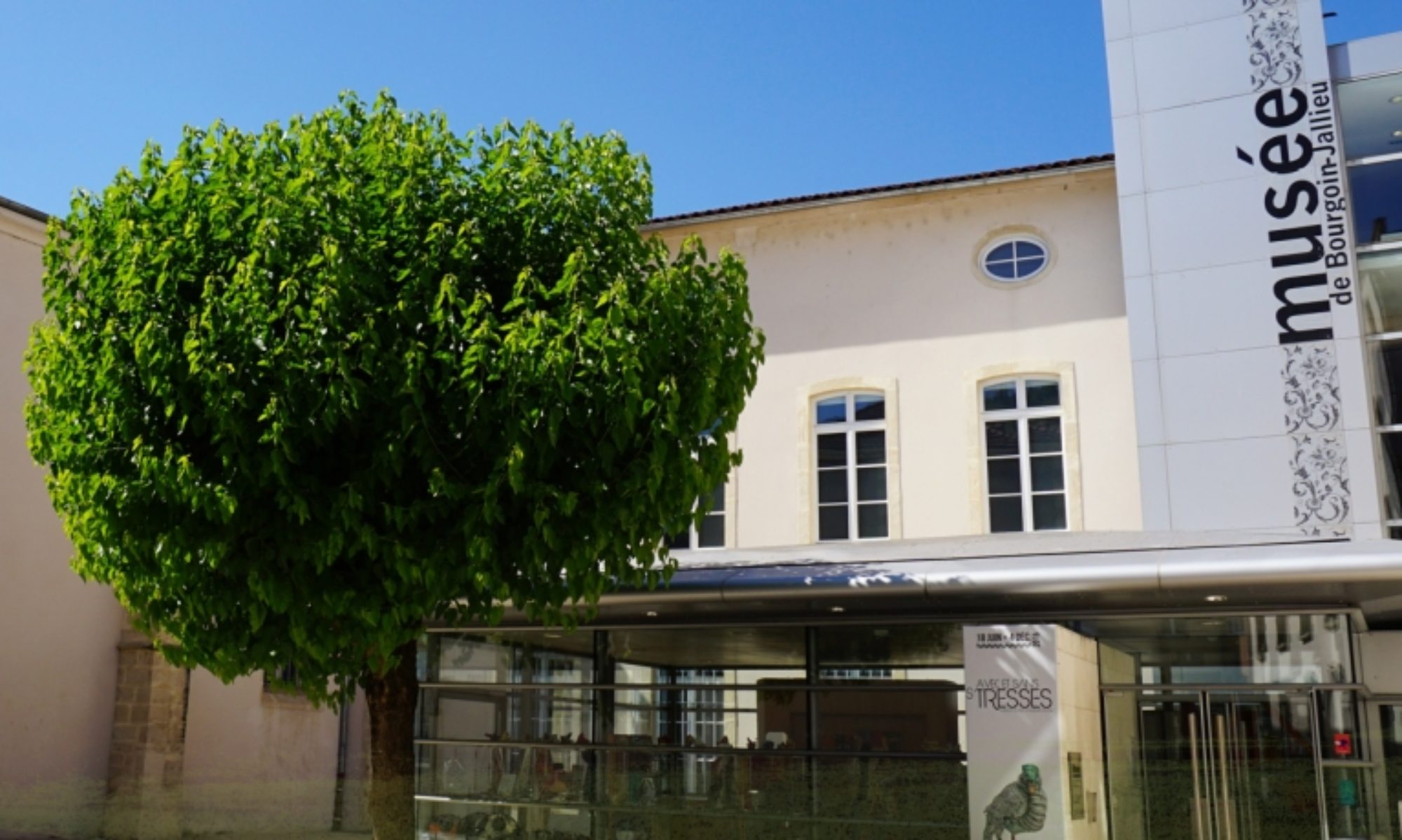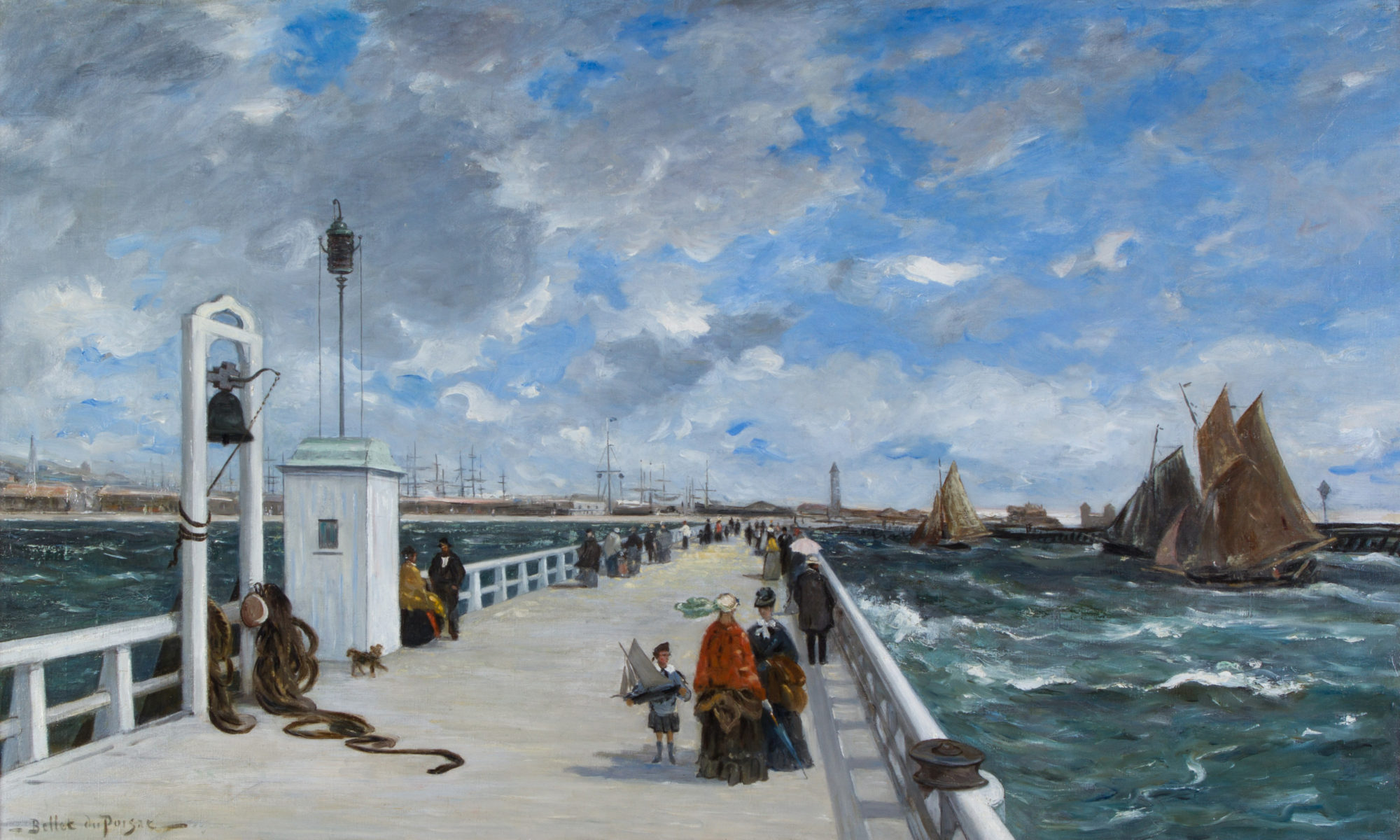Painted in 1876, The Pier at Trouville sur Mer is one of the most mature examples of Bellet du Poisat’s work in the field of landscapes. Initially influenced by Delacroix, dominated by history and genre painting, his work started to evolve around 1870, turning more and more towards landscapes, with his travels to the Netherlands, Geneva, Normandy and then Provence.
If this interest in landscapes appeared as early as 1866 with the paintings he produced in Holland, it would seem that his stay in London, at the time that Paul Durand-Ruel began working as a merchant, served to reinforce Bellet du Poisat’s new direction, in keeping with the influx of French artists in London fleeing the Franco-Prussian War of 1870 and the “troubles” of the Commune (Daubigny, Monet, Pissarro, etc.).
Featured at most of the exhibitions of the Society of French Artists organized by Durand-Ruel at his London gallery, Bellet du Poisat’s works were to be found, starting in the early 1870s, in some of the most renowned French collections: those of the merchant Hoschedé and of the baritone Faure, who were among the earliest and most prominent collectors of Impressionist paintings.
Although he did not take part in any of the so-called “Impressionist” exhibitions organized in Paris from 1874 onwards, both British and French critics often associated Bellet du Poisat with those artists who exemplified this trend. The Pier at Trouville sur Mer depicts a site that was a popular subject for pre-impressionist artists (Boudin, the young Monet, etc.), a motif that became increasingly common among painters visiting Normandy after the opening of a railway line linking Paris to Deauville.
While The Pier at Trouville sur Mer is consistent with the Impressionists’ “manière claire” and their palette of bold colors, it eschews the delicacy and pearly tones of Boudin, and equally rejects the tendency of the young Impressionists towards the use of an increasingly fractured, small, and heavily disconnected stroke, resulting in the fragmentation of the subject. Prepared from sketches, the painting—given its dimensions—was doubtlessly produced in the studio.
Right from the start, Bellet du Poisat was noted (and sometimes criticized) for his frank, powerful and straightforward approach to painting. Focusing on landscapes, he never shied away from this genre long considered to be minor and effect-oriented. He pushed to the extreme the contrast between the harsh whites and the depths of an emerald sea, playing subtly with the streaks of clouds enlivening the blue of an immense sky, the whiteness of the foam swept away from the waves, skimming the surface, saturating the color of the waves… he remained faithful to the “manière dense” and the chromaticism of early Monet, to the harshness of Manet’s few seascapes…
This kind of radicalism, which is also seen in the simple and effective composition of the painting (with the expanse of the sea split by the pier), is also evident in the simplified depiction of the people in the painting, which eludes any form of the picturesque, thereby avoiding the pitfall of narrative, in spite of the liveliness they lend to the painting. The perspective, facing landward from the end of the pier, is a unique feature that contrasts with the nearly universal perspective of most other painters who portrayed this site.
A catalog of the 1883 Salon de Lyon states:
Throughout all his travels, he was constantly observing, but he painted little of nature, taking only sketches and a few colorful notes; then, back in his studio, he recalled all his vivid memories and translated them onto the canvas with a quality of sincerity and fidelity that testifies to the power of his impressions […] He was above all a colorist, and the harmonies and oppositions of tones impressed him strongly; in some of his landscapes, he painted with an astonishing rawness, an audacity of color; elsewhere, however, he could be gentle, harmonious, with very fine and delicate tones.
Concerning the painting displayed here, painter and critic Joseph Guichard (1806-1880) gave an account of the 1884 Lyon Salon, writing:
My feet ache to walk along your Trouville Pier, convinced as I am of the exquisite effect it would produce on me. What a magician you are! A gatehouse, some whitewashed pine handrails as a foreground—this would be enough to make fifty skilled painters stumble. For you, it’s a contrast of values from which you derive immense benefit. I know only one country gentleman artist capable of using the palette to its fullest extent, as you do. It is Mr. Ravier. If you could have heard him praising your pier!


